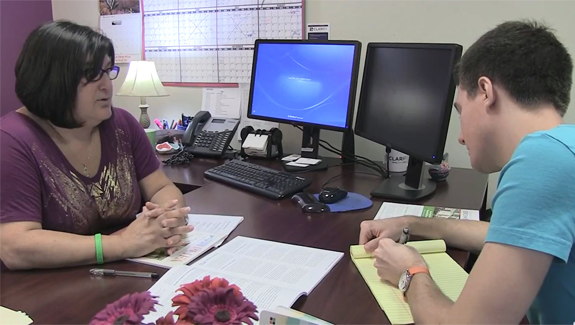Some of the other sources of the financial instability that beset families have been attributed to the challenges associated with being a single-parent family, the volatility and fragility of income shocks, and the shredding of some safety nets. Ray Boshara, director of the Center for Household Financial Stability and assistant vice president at the Federal Reserve Bank of St. Louis, used the preceding observations to provide the economic context for a session at the 2016 Reinventing Our Communities conference, “Rebuilding Household Balance Sheets and Improving Financial Capability,” during which speakers discussed programs designed to assist with the savings, wealth, and financial stability of low-income families. Those programs are summarized here.
Reliance on Borrowing to Meet Financial Needs
Credit can be a lifeline in times of financial need. A person’s creditworthiness as represented by his or her credit score is crucial when navigating financial markets. Yet, more than 50 million people do not have credit scores. Moreover, nearly 20 million people do not have access to a bank account. When many people in these categories are in need of additional funds, they rely on alternative financial services such as check cashing services and payday lenders. Unfortunately, some payday loans have an annual interest rate between 300 and 500 percent. Consequently, many borrowers find themselves rolling over their payday loans many times before they can pay them off. Fortunately, there is an alternative to payday loans, namely, lending circles. Lending circles, which exist worldwide, allow people to come together for the purpose of lending to and borrowing from each other when bank loans are not an option.
José Quiñonez, chief executive officer at Mission Asset Fund (MAF)1 in San Francisco, has transformed this age-old practice by organizing MAF’s Lending Circles program through the use of technology and credit reporting. Through this program, participants have access to affordable loans and, in the process, build credit, which can lead to a more financially stable future.
MAF provides an online financial training class for prospective participants in its Lending Circles program. After the training class, as many as six to 10 people form a lending circle and decide on the amount of the loan fund for the group (e.g., a group of 10 participants may agree on a loan fund of $1,000). Every participant makes the same monthly payment, ranging from $50 to $200, which MAF reports to the credit bureaus. Each month, the participants take turns borrowing the $1,000 until each participant has had a chance to obtain a loan. Upon completion of the program (i.e., after the zero-interest loan has been made to each member), participants are generally able to build a credit history and establish credit scores for the first time or repair damaged credit. Moreover, participants might be able to avoid predatory lenders and open bank accounts.

MAF has found that its Lending Circles program has had a beneficial impact on low-income borrowers. Realizing the positive influence of this program, MAF has embarked on a vision to create a fair financial marketplace for hard-working people. Thus, its goal is to expand the Lending Circles program throughout the United States by helping nonprofits establish similar programs in their communities.
In recognition of Quiñonez’s innovative approach to connect low-income people to mainstream financial services, the John D. and Catherine T. MacArthur Foundation named him a 2016 MacArthur Fellow.
Financial Capability
The financial difficulties encountered by families not only have a profound impact on adults but also on younger family members. Thus, an increased understanding of financial matters among youth would not only help them to comprehend the financial predicament of their families but also equip them to better navigate the financial landscape as they grow older. Hallie Lienhardt, an outreach specialist for the Center for Financial Security (CFS) at the University of Wisconsin–Madison, discussed an innovative approach to financial education for youth. CFS’s My Classroom Economy (MCE) is an experiential approach to financial education in contrast to more traditional programs that rely on lesson plans. Under MCE, teachers set up a classroom-based economy in which students are assigned jobs that provide classroom “dollars.” Students are able to spend their money on various things, such as renting or purchasing their desks or buying items at classroom stores or auctions.2 The role-playing involved in the classroom’s simulated economy provides students with ample opportunities to improve their financial capability by practicing budgeting and saving through several core activities. Their learning might also continue at home, where they may receive real money for chores performed around the house.
CFS evaluated the effectiveness of MCE as a financial education tool with the assistance of 24 schools in the school district of Palm Beach County, FL. The schools that volunteered for the evaluation were randomly assigned to either a treatment or comparison group. MCE was implemented in the classrooms of students in the treatment group during the study period but not in the comparison group. Student surveys were administered to both groups before and after the study period. The pre- and post-study surveys measured financial knowledge, budgeting behavior, planning behavior, self-control, financial socialization outside of school, and financial experiences. Teachers and parents were also surveyed after the study period. Lienhardt reported that the evaluation found a statistically significant positive change in students’ financial knowledge. This is particularly noteworthy since teachers did not use formal lesson plans on financial topics, but rather exposed students to financial situations. The parent surveys revealed that many of the children had bank accounts in their own names and made their own money decisions. Moreover, the teachers generally had a good or excellent experience with MCE, and 95 percent of them planned to continue using the program.
Financial Coaching
Mae Watson Grote, founder and executive director of the Financial Clinic in New York,3 was motivated to help the working poor become financially secure. She founded the Financial Clinic to assist poor working families and individuals in addressing their immediate financial goals and setting long-term goals to achieve financial mobility. The clinic typically serves clients who have an average salary of $17,000 a year, and it aids clients in building credit, choosing banking products and services at a lower cost, identifying ways to lower debt, and doing tax planning throughout the year in order to save some of their tax refunds. The organization has had a demonstrable impact on the clients it has served. As a result of the clinic’s efforts, $30 million has been put back in the pockets of 15,000 poor working people, almost $1.5 million in debt has been eliminated, and savings of more than $510,000 has been generated through financial planning.
Grote also reported on the Financial Clinic’s participation with another organization4 in a study commissioned by the Consumer Financial Protection Bureau on the effectiveness of financial coaching in improving the financial capability, well-being, and security of poor working individuals. According to Grote, the study used a randomized controlled trial approach, in which participants were randomly assigned to either a treatment group or a control group. (The randomized approach mitigates the self-selection bias that might otherwise occur and undermine the true results.) The study enrolled 430 participants, of whom 222 were randomly assigned to the treatment group. The enrollees had an average salary of $22,000 a year; 40 percent were on fixed incomes or unemployed, and 60 percent were working. The Financial Clinic provided financial coaching to 124 of those in the treatment group over a 13-month period.
The Financial Clinic views financial coaching as a collaborative approach in which the client works with the coach on achieving pre-determined financial goals over time, while taking into account financial indicators that signal a movement toward the client’s goals. In addition to being judgment-free, the approach has some other distinct characteristics. The approach is based on accountability, in that the client and the coach hold each other accountable. It is also strength-based, in that the client comes to the process with assets — such as talent, networks, and resources — that can be leveraged to reach the agreed-upon goals.
Grote noted that the study demonstrated that financial coaching is not a boutique service but one that has some tangible results. The overriding takeaway from a practitioner’s perspective is that behavior change is possible. The study showed an increase in well-being indicators represented by less stress. In addition, for those who received financial coaching, results included an average savings of about $1,700, an increase in credit score, and a reduction in debt. A particularly noteworthy finding was that the results of financial coaching were the same regardless of gender, ethnicity, and educational level.
The ups and downs of economic activity create challenges for consumers in navigating the financial landscape. Fortunately, there are programs such as those discussed here that offer some assistance to consumers in their quest for financial stability.
The views expressed here do not necessarily represent the views of the Federal Reserve Bank of Philadelphia or the Federal Reserve System.
[1]See http://missionassetfund.org.
[2]The materials for MCE are supplied by the Vanguard Group. Although MCE covers grades K–12, the program discussed by Lienhardt focused on grades 3–5. See www.myclassroomeconomy.org.
[3]See http://thefinancialclinic.org.
[4]The other participant was Branches, a faith-based organization in Miami (see http://branchesfl.org).

